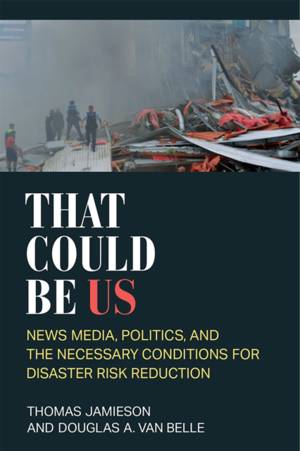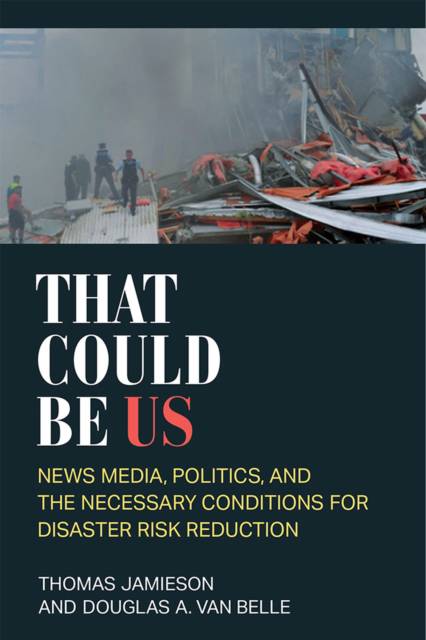
- Retrait gratuit dans votre magasin Club
- 7.000.000 titres dans notre catalogue
- Payer en toute sécurité
- Toujours un magasin près de chez vous
- Retrait gratuit dans votre magasin Club
- 7.000.0000 titres dans notre catalogue
- Payer en toute sécurité
- Toujours un magasin près de chez vous
That Could Be Us
News Media, Politics, and the Necessary Conditions for Disaster Risk Reduction
Thomas Jamieson, Douglas A Van Belle
Livre relié | Anglais
88,95 €
+ 177 points
Description
The evidence presented in this book suggests that when the necessary conditions for disaster risk reduction (DRR) are in place, it is possible for elected officials to pursue DRR policies in their rational self-interest. As such, when the media makes it possible through lesson-drawing coverage of distant disasters, DRR policies become much more likely in observing communities because elected officials can seize the opportunity to both make political gains and protect their constituents. Authors Thomas Jamieson and Douglas A. Van Belle provide reasons for optimism about the prospect of DRR in at-risk communities around the world--observing communities are able to learn from the experiences of stricken areas and pursue policies that ultimately save lives and reduce economic damage from disasters. In That Could Be Us, Jamieson and Van Belle find that the news media delivers information to observing communities in a form that enables learning from other disasters. Experimental evidence shows that people react to this information in a way that would punish leaders who do not back DRR efforts. Case studies, interviews, experiments, and illustrative examples suggest that leaders and political entrepreneurs heed this public demand, react to news media coverage, and act accordingly. Taken as a whole, this suggests that the policy and research implications derived from this book's theoretical model are worthy of further exploration, particularly in terms of how they might resolve the puzzle presented by the variations in DRR policy uptake around the world that do not seem to be driven by developmental differences across communities.
Spécifications
Parties prenantes
- Auteur(s) :
- Editeur:
Contenu
- Nombre de pages :
- 228
- Langue:
- Anglais
Caractéristiques
- EAN:
- 9780472132997
- Date de parution :
- 14-03-22
- Format:
- Livre relié
- Format numérique:
- Genaaid
- Dimensions :
- 154 mm x 232 mm
- Poids :
- 362 g

Les avis
Nous publions uniquement les avis qui respectent les conditions requises. Consultez nos conditions pour les avis.






